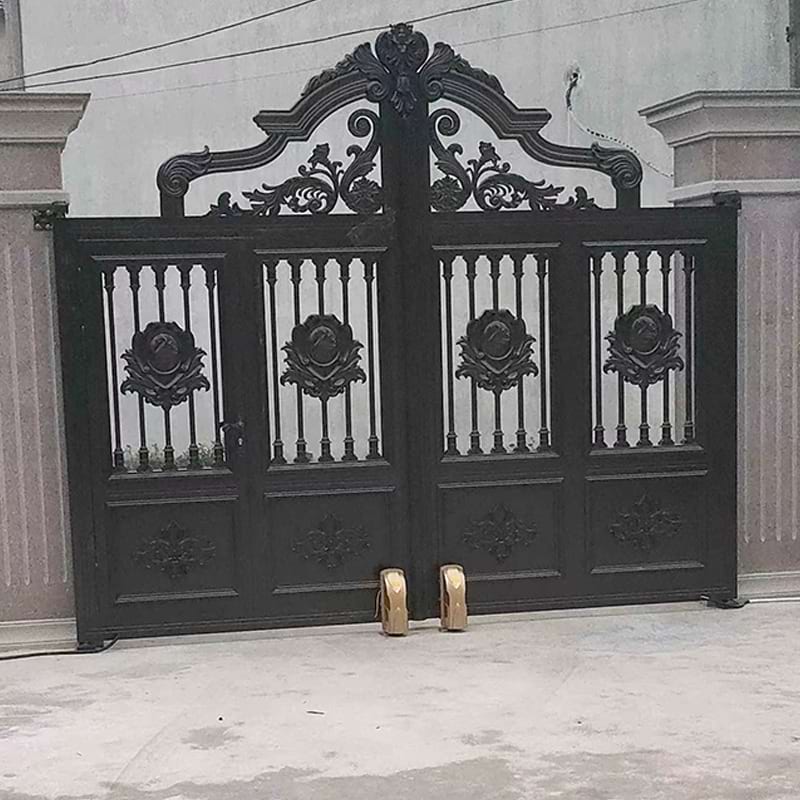Installing a gate opener on a heavy-duty or large gate requires careful planning and proper equipment to ensure smooth and safe operation. Such gates are commonly found in industrial, commercial, or residential properties where durability and functionality are crucial. This guide outlines the steps, tools, and considerations needed to successfully install a gate opener for heavy-duty or large gates.

Before starting the installation, ensure the gate opener is suitable for your gate's size, weight, and type.
Weight Capacity: Check the manufacturer's specifications to confirm the gate opener can handle the weight of your gate.
Type of Gate: Select an opener designed for your gate type, whether it's a swing, sliding, or cantilever gate.
Power Source: Decide between electric, solar-powered, or battery-operated systems based on your location and preferences.
Prepare the following tools and materials:
Drill and drill bits
Wrenches and screwdrivers
Level
Measuring tape
Concrete mix (if new posts or mounting pads are required)
Gate opener kit (with motor, brackets, arms, and hardware)
Inspect the Gate: Ensure the gate is structurally sound, free from warping, and swings or slides smoothly.
Level the Ground: Clear debris and level the ground near the gate for proper installation of the motor and other components.
Install Gate Posts: If the existing posts are weak or misaligned, replace them with reinforced metal or concrete posts.
Swing Gate Openers: Attach the mounting brackets for the motor to the gate and gate post. Ensure the brackets are aligned properly and use a level to maintain accuracy.
Sliding Gate Openers: Mount the track or roller system to guide the gate. Ensure the track is straight and securely anchored to the ground.
Follow the manufacturer’s instructions to securely mount the motor.
Position the motor at the proper height and distance from the gate to prevent strain during operation.
For heavy-duty gates, consider using additional support brackets or reinforcing the motor’s mounting surface.
For swing gates, attach the gate arms to the motor and the gate itself. Adjust the arm length for smooth operation.
For sliding gates, connect the chain or belt mechanism to the gate. Ensure proper tension to avoid slack.
Wiring: Connect the opener to its power source. Use weatherproof conduits to protect electrical wires.
Control Box: Install the control box in an accessible yet secure location. This box manages remote control, keypad entry, or sensor systems.
Safety Sensors: Install safety sensors or photocells to detect obstacles and prevent accidents.
Initial Testing: Operate the gate using the remote control or keypad to check for smooth and consistent movement.
Adjustments: If the gate does not open or close properly, adjust the arm alignment, chain tension, or motor settings.
Safety Check: Test the obstacle detection system to ensure the gate stops or reverses when it encounters an object.
Use Reinforced Components: Heavy-duty gates exert more strain on hardware. Opt for reinforced brackets and hinges to ensure longevity.
Secure the Power Source: If the opener is powered by electricity, install a surge protector to shield it from power fluctuations.
Follow Local Codes: Check local regulations or homeowner association rules for gate opener installations to ensure compliance.
Maintenance: Regularly inspect and maintain the motor, tracks, and safety sensors for optimal performance.
While DIY installation can be cost-effective, consider hiring a professional if:
The gate is excessively large or complex.
You are unfamiliar with electrical systems.
The installation requires extensive welding or structural modifications.
Installing a gate opener on a heavy-duty or large gate can enhance security, convenience, and functionality. By carefully selecting the right opener, preparing the gate area, and following the installation steps, you can achieve a smooth and reliable system. For best results, consult the gate opener manufacturer’s manual and consider professional assistance if needed.